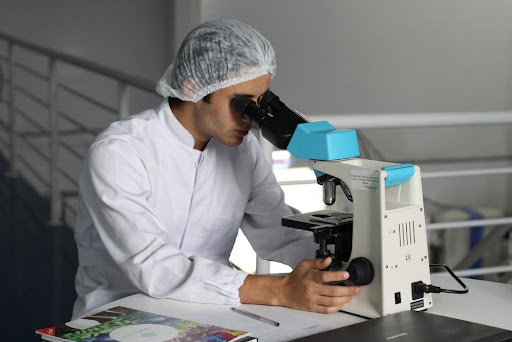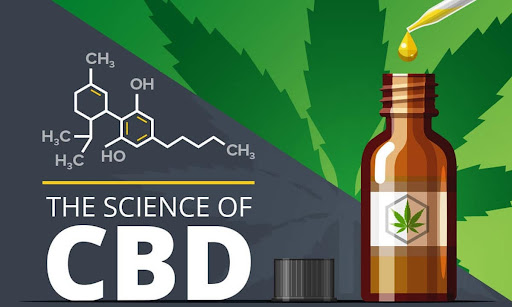Understanding The Science Of CBD
A knowledge of neuroscience is required to understand how the cannabis plant interacts with the animal body and brain. For this reason, knowing the science of CBD and its nature is vital.
Author:Suleman ShahReviewer:Han JuFeb 04, 202214 Shares356 Views

A knowledge of neuroscience is required to understand how the cannabis plant interacts with the animal body and brain. For this reason, knowing the science of CBDand its nature is vital.
The Endocannabinoid System
So let’s just get this out there from the start: Human beings (actually, more accurately, fish, reptiles, earthworms, leeches, amphibians, birds, and all mammals including human beings), have a built-in, biological system that can receive, process, and use the medicinal compounds in cannabis. In other words, we are hardwired to use these compounds.
This system that resides right inside you at this very moment is called the endogenous cannabinoid system or endocannabinoid system, an innate bodily system that produces its own cannabinoid-like compounds and can process the cannabinoids found in hemp and cannabis. According to Dr. John McPartland this system started developing in lifeon Earth around 600 million years ago.
While we started looking at cannabis from a medicinal lens thousands of years ago, things didn’t really get cooking until about 125 years ago when we started isolating individual cannabinoids in cannabis.
Cannabinol came first in 1895, followed by cannabidiol (CBD) in 1940 and the mother lode of cannabinoid discoveries, tetrahyrdocannabinol, or THC, in 1964, by revered cannabis researcher and pharmacologist Dr. Raphael Mechoulam.
The endogenous cannabinoid system is an extensive network of neurons, neural pathways, receptors, cells, molecules, and enzymes that work tirelessly throughout your body to maintain a state of homeostasis: a stable internal environment despite fluctuations in the external environment.
The ECS is essential to life’s basic processes by relaying messages that affect how we relax, eat, sleep, forget, and protect, it’s responsible for two major functions in the body: modulating pleasure, energy, and well-being while restoring bodily balance in the face of external stressors (physical, emotional, and psychological). The total effect of the ECS is to regulate homeostasis and prevent disease and aging.
So how does the ECS fit into the big picture of our body’s complex inner workings? And why is it important to the mitigation of disease?
Let’s explain by looking at one specific bodily system, the immune system. Say your body is faced with a virus or bacterial invader. Your immune system will kick on like a furnace to produce the fever needed to fry the invader. When the job is done, the ECS signals the immune system to cool down and restore homeostasis. But if the feedback loop is out of control, if the immune system overreacts to stress or mistakes its own body for a foreign invader, this is when we develop autoimmune diseases or inflammatory disorders.
And let’s not forget how we came to understand these inner workings in the first place: cannabis! The cannabinoids in hemp and cannabis stimulate the same receptors (CB1 and CB2) that our own natural compounds do, serving as a substitute “retrograde messenger” that mimics just what our bodies do when they try to maintain balance. This gives cannabis a unique synergy with our own bodily processes, and allows it to be a natural and nontoxic medicine. It is also why cannabis-based treatments and supplements must be tailored to the individual, because everybody and every ECS is unique.
Next, let’s talk about the most important parts of the endocannabinoid system in a little more detail.
Endogenous Cannabinoids
Neurotransmitters are chemical messengers in the body. Their job is to transmit signals from nerve cells to target cells. These target cells may be in muscles, glands, or other nerves. Cannabinoids, both the ones our body produces itself and the ones we get from cannabis, are neurotransmitters. There are hundreds of different neurotransmitters produced by the body for use in the specific systems they’re needed.
Endogenous cannabinoids (or endocannabinoids) are compounds that our body produces itself. Your body creates endocannabinoids with the help of fatty acids. Omega-3 fatty acids are especially important for this, and research in animals has shown a connection between diets low in omega-3s and mood changes caused by poor endocannabinoid regulation. Hemp seeds are a quality source of omega-3, but fish like salmon and sardines produce a form of omega-3s that is easier for your body to use. New research has found that omega-3 fatty acids might also provide anti-inflammatory benefits in much the same way as our endocannabinoids and the cannabinoids in hemp and cannabis do.
The two endocannabinoids are produced “on demand” by nerve cells (called neurons) whenever our ECS needs to kick on to maintain balance. They tell your body when to get certain processes started, and when to stop them. The first endocannabinoid, N-arachidonoylethanolamine (AEA), is more commonly known as anandamide. The second is 2-arachidonoylglycerol, or 2-AG.
When picked up by the specialized cannabinoid receptors that sit on our cells, endocannabinoids give the cell specific directions. Regardless of the reason the ECS kicks on, the goal is to help the body get back to a state of homeostasis, and the production of endocannabinoids helps regulate this process. We now understand that by controlling the volume at which neurotransmitters are sent, cannabinoids can impact the length and intensity of the body’s response.
Phytocannabinoids
As mentioned, phytocannabinoids are cannabinoids that come from plants. These plant cannabinoids (like THC, CBD) stimulate our cannabinoid receptors and carry out functions similar to our own endogenous anandamide and 2-AG.
THC is the most thoroughly understood phytocannabinoid because its psychoactive effects garnered it the attention it needed to be studied extensively. Phytocannabinoids bind to both the CB1 and CB2 receptors and interact with them in similar ways as anandamide and 2-AG do.
We also know that non-psychoactive phytocannabinoids from other plants, and even other phytochemicals, or active plant compounds like terpenes and flavonoids, can be picked up and utilized by receptors in our endocannabinoid systems.
But unlike our endocannabinoids, there are no enzymes present in the body that can immediately break down phytocannabinoids and, therefore, their effects last much longer. When consuming cannabis-based medicines, the body gets much higher levels of cannabinoids than it can produce itself, thus producing a therapeutic effect. In addition to this, CBD blocks the enzyme that breaks down AEA and THC, which in effect increases our “endocannabinoid tone.”
Synthetic Cannabinoids
Synthetic versions of both THC and CBD have been developed. THC has been modified to create synthetic analog drugs like HU-210, which is many times more potent an agonist (chemical activator) of the CB1 receptor and is used for scientific research. According to Martin Lee, such potent drugs “have been very useful experimentally because they drive the receptor more intensely than do THC or the endocannabinoids. While this property (being a ‘high-efficacy full agonist’) can create more readily observable results when compared to a partial agonist like THC, such experiments are frequently and inaccurately publicized as revealing a specific effect of marijuana.”
Finally
Cannabidiol (CBD) is a non-psychoactive cannabis-derived chemical that has grown in popularity as an over-the-counter treatment. CBD has a low affinity for cannabinoid receptors, and the molecular target(s) through which CBD exerts biological activity are unknown. Individuals frequently self-medicate with CBD products with little understanding of its unique immunopharmacological effects on the human immune system; nonetheless, research has shown that CBD has immune-modulating capabilities, primarily in rodent models.

Suleman Shah
Author
Suleman Shah is a researcher and freelance writer. As a researcher, he has worked with MNS University of Agriculture, Multan (Pakistan) and Texas A & M University (USA). He regularly writes science articles and blogs for science news website immersse.com and open access publishers OA Publishing London and Scientific Times. He loves to keep himself updated on scientific developments and convert these developments into everyday language to update the readers about the developments in the scientific era. His primary research focus is Plant sciences, and he contributed to this field by publishing his research in scientific journals and presenting his work at many Conferences.
Shah graduated from the University of Agriculture Faisalabad (Pakistan) and started his professional carrier with Jaffer Agro Services and later with the Agriculture Department of the Government of Pakistan. His research interest compelled and attracted him to proceed with his carrier in Plant sciences research. So, he started his Ph.D. in Soil Science at MNS University of Agriculture Multan (Pakistan). Later, he started working as a visiting scholar with Texas A&M University (USA).
Shah’s experience with big Open Excess publishers like Springers, Frontiers, MDPI, etc., testified to his belief in Open Access as a barrier-removing mechanism between researchers and the readers of their research. Shah believes that Open Access is revolutionizing the publication process and benefitting research in all fields.

Han Ju
Reviewer
Hello! I'm Han Ju, the heart behind World Wide Journals. My life is a unique tapestry woven from the threads of news, spirituality, and science, enriched by melodies from my guitar. Raised amidst tales of the ancient and the arcane, I developed a keen eye for the stories that truly matter. Through my work, I seek to bridge the seen with the unseen, marrying the rigor of science with the depth of spirituality.
Each article at World Wide Journals is a piece of this ongoing quest, blending analysis with personal reflection. Whether exploring quantum frontiers or strumming chords under the stars, my aim is to inspire and provoke thought, inviting you into a world where every discovery is a note in the grand symphony of existence.
Welcome aboard this journey of insight and exploration, where curiosity leads and music guides.
Latest Articles
Popular Articles

